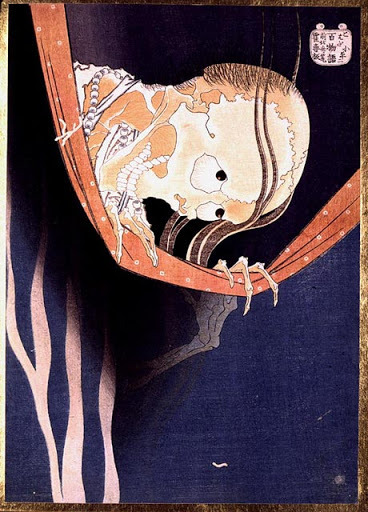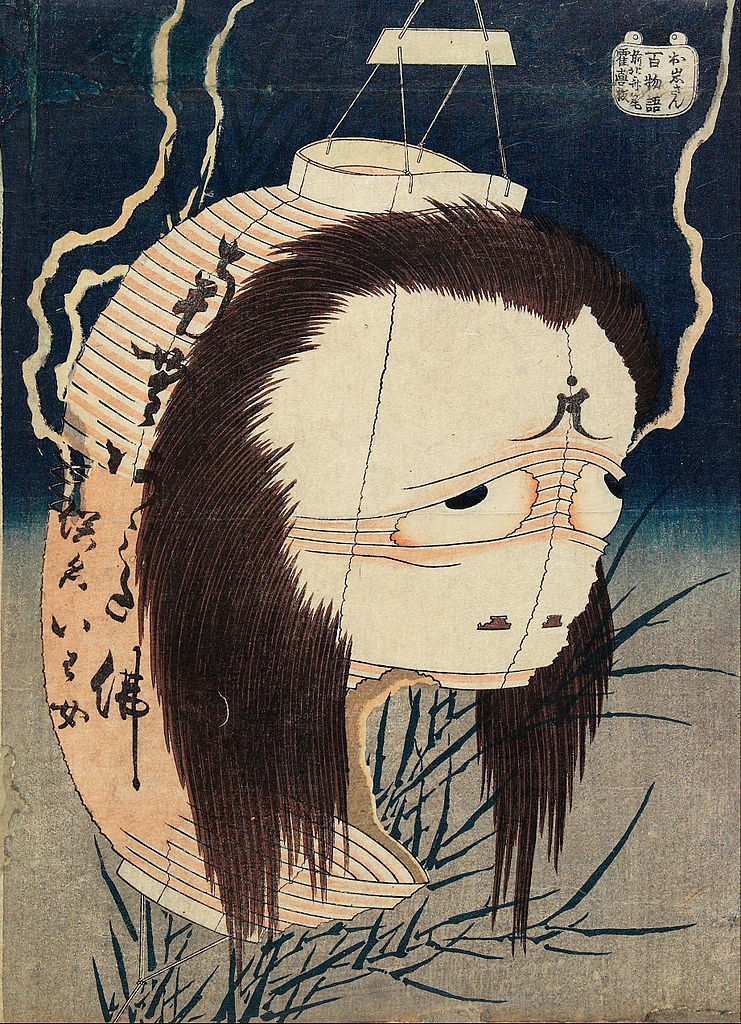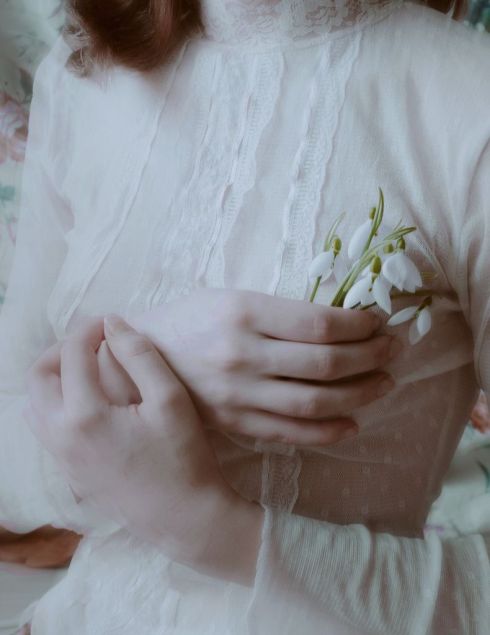The redhead vixen staring straight at us from the canvas without a trace of shyness was Herma; Klimt’s favourite model. He apparently said that her ass was more beautiful and more intelligent than the faces of all other models; what a compliment! The story goes that one day Herma didn’t show up at his studio, days passed and she still didn’t show up and Klimt got worried she might be ill so he sent someone to get her. It turned out she didn’t want to come and pose because she was pregnant, but regardless Klimt insisted she must pose for him, despite her condition, and that’s how painting “Hope I” was born. There is also a painting “Hope II” painted in 1907-08 but it is very different stylistically, and I personally love “Hope I” more, especially these days. There is just so many interesting details about it that keep me captivated.
Firstly, there is the subject of a nude woman, Klimt’s preferred motif to paint, but this time the woman is heavily pregnant and we don’t see that often in art. Still, despite her huge stomach, the rest of her seems slender and girlish, just like other women in Klimt’s paintings. With masses of coppery red hair and the wreath of delicate flowers in her hair, she seems more like a bride than like a mother to be. Gazing directly at us, and unashamedly naked, with her ginger pubic hair exposed, she seems like a wild child of nature, a forest nymph, a friend of water lilies, weeping willows and reed. The very elongated format of the painting and the, at least partly ornamental background, were obviously taken from Japanese Ukiyo-e prints. The choice of using a vertical canvas goes hand in hand with the motif of a woman shown standing up.
The space around her, above her and behind her is decorative and undefined; it’s a symbolic setting not a real one. The wave of serene blue colour, adorned with golden dots and blade shaped ornaments, flowing from the woman’s hair to her legs looks like a waterfall. On the left of the woman is a strange, but lovely black creature called the sea monster; it doesn’t look like a scary monster to me, rather it reminds me of that ghost in Hayao Miyazaki’s “Spirited Away”. Above them we see strange, unsettling faces with grimaces and dead eyes, and also a skull. A very strange motifs considering the painting is called Hope. The eerie heads and skulls reminded me of the way Katsushika Hokusai portrayed his Lantern ghost and Kohada Koheiji’s skull appearing as a ghost at the burning mosquito net before his wife’s lover who murdered him. This painting is filled with unsettling contrasts; the sensuality of the woman’s body contrasts with her future role of a mother, the darkness of the background contrasts with the growing new life.

Katsushika Hokusai, Kohada Koheiji’s skull appears as a ghost at the burning mosquito net before his wife’s love who murdered him, 1830

Katsushika Hokusai, The Lantern Ghost, 1830








